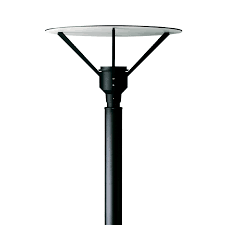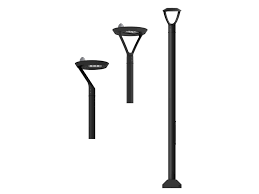LEDS technical data: 10 tips to keep in mind
Post top led garden light are becoming increasingly popular. Their structure and functionality ensure an unbeatably high level of energy efficiency, which is why LEDs have now also overtaken energy-saving lamps. But there are also some differences with LEDs that should be taken into account: energy consumption, luminosity or color.
1. Lumen of Post top led garden light
Lumen is the decisive value for the brightness of an LED. In contrast to the good old wattage, Lumen describes the brightness much better. Because the value indicates how high the amount of light is that a lamp actually emits.
The current wattage of modern light sources is significantly lower than that of conventional light bulbs. Often times you will only find values between three and nine watts on the packaging. This is because modern lighting technology uses much less electricity.
Energy Consumption of modern Led Garden Light
The wattage of modern Post top led garden light is therefore hardly meaningful in relation to the brightness to be expected. If you miss the old unit of measurement: the conversion from lumens to watts usually comes on the packaging.
Think about the purposes for which you want to use the room and what atmosphere it should have. For more information on the subject, read our blog post Let there be light – properly illuminate living spaces.
- A to E = energy label
In the European Union, the energy efficiency of light sources must be labeled. These energy labels are based on strict standards and extend up to the best possible classification A ++. LEDs generally belong to class A to A +, halogen lamps and incandescent lamps correspond to class B or C. Since 2016, however, class C luminaires are no longer popular to come onto the market.
3. From warm to cool Post top led garden light = light color
Some manufacturers have already developed their own descriptions for the light color of an LED. They offer the buyer quicker orientation on the packaging.
- K = color temperature
If there is no description of the light color, then pay attention to the Kelvin specification (K). It indicates the color temperature and thus also the Post top led garden light color.
- 1,800 to 2,500 Kelvin – the so-called “super” or “ultra” warm white (similar to a burning candle)
- Warm white light comes by 2,500 to 3,300 Kelvin
- Neutral white light up to 5,300 Kelvin is ideal for the office
Daylight white light from 5,300 Kelvin has a particularly high proportion of blue. This has one advantage: it makes us wide awake in the morning.
5. Ra = color rendering Post top led garden light
Have you ever seen that you can no longer see red in a room that is completely illuminated in red? Because red comes in red light. This has something to do with the color rendering of a light source, which is described in an index.
Sunlight and incandescent lamps achieve an Ra value of 100. This means that they contain all spectral colors in the same distribution and thus reproduce the color of objects in a particularly natural way. A lamp with this property has a value of at least 90 Ra.
6. Percent = luminosity
The percentage on the packaging indicates in how many seconds (s) the lamp reaches its full luminosity (%).
- Check mark = dimmability
Not every Post top led garden light is easy to dim. You can recognize dimmable LEDs by the tick next to the dimmer symbol.
8. Service life of Post top led garden light
The service life of an LED is usually specified in operating hours. Service life describes the time until the voltage drops to 70 percent (luminous flux decreases). The following rule of thumb applies: in the household (living room, kitchen or bathroom) a lamp is on for approx. 1,000 hours per year.
An average of 2,400 operating hours per year is calculated for offices, which corresponds to 10 hours per working day. For rooms such as the pantry, hallway, bedroom or guest toilet, an average of 180 operating hours per year is calculated.
- Hg = mercury
Small amounts of mercury are common to produce efficient light sources. In contrast to other light sources, LEDs contain little or no mercury. You can see the mercury content of the Post top led garden light on the packaging with the value Hg (chemical name for mercury).
10. E = thread identification of Post top led garden light
To find the right LED light for the thread, you need to know the thread size – because your bedside lamp may need a different thread than your living room light. The shape and the name of the Edison thread common in Europe go back to Thomas Alva Edison. The thread identifier is “E”, followed by the outer thread diameter in mm. E27 corresponds to a large thread, whereas E14 corresponds to a small socket.
The 6 biggest advantages of LED lamps & lights:
Low power consumption
Up to 10 times less than an ordinary light bulb. Because of their low power consumption, the ecological balance of Post top led garden light is extremely positive.
High luminous efficacy
The good energy and performance balance of LEDs is the result of a long technical development. In 1962, the first LED still achieved a light output of 0.1 lumen / watt (lm / W). Today, high-power LEDs achieve 100 to 200 lumens / watt.
Quick and easy change thanks to standardized sockets
Not only has the technology of LEDs developed enormously in recent years, but also their optical quality. Today, the light-emitting diodes look similar to modern energy-saving lamps and fit into conventional sockets such as E14 or E27.
Without mercury
LEDs can do without mercury and other dangerous substances. This gives many consumers a pleasant feeling, as there is an increased health risk if lamps containing mercury break.
Long service life of up to 50,000 hours In
contrast to other light sources, LEDs can remain in use for a very long time. Depending on their use, they are practically maintenance-free over their service life.
No switch-on Post top led garden light
Delays Post top led garden light burn immediately and provide full light intensity without any start-up time. The LED has thus overtaken the energy-saving lamp, because its use is limited (places such as the hallway or the toilet rule out from the start).







